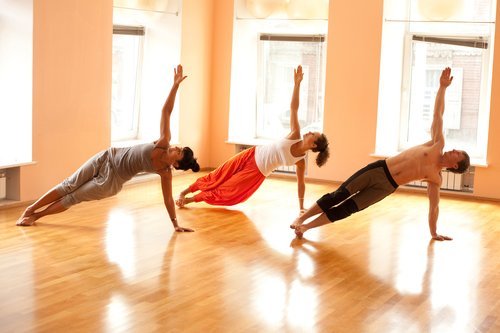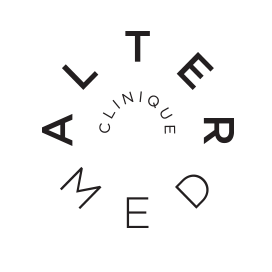Montreal physiotherapy

Motivation for physical activity part 2: The relationship to the body and the pitfalls of each
Understanding our relationship with physical activity is a worthwhile endeavour, and one that begins well with identifying what motivates us. However, it is also very important to understand the relationship we have with our bodies. In other words, the way we perceive our bodies and the role we attribute to them in physical activity dictates the right reinforcement tools, but also the classic pitfalls that can occur with each way of thinking. Today we will explore the most common relationships to the body and a pitfall to avoid for each.
The performative
This relationship to the body, obviously associated with people who do physical activity for performance, comes down to seeing the body as a machine that serves only to produce competitive results. The ever-present danger here is to forget that the body needs time and recovery and that it has limits, whether we like it or not. This classic feeling of invulnerability is an illusion that will break sooner or later in the athletes' career, but many bodies could be saved if the athletes concerned came to this realization without having to injure themselves. All of this explains why we often see the prevention habits of athletes in later life contrast greatly with the carefree attitude they may have had at the beginning of their active life.
The instrumental
This second relationship to the body could be associated with those who do physical activity for the thrill and for the functional aspect. They see the body as secondary to the task at hand, but there is a distinction between the two. Adrenaline junkies are rarely concerned with training their bodies for the activity they plan to perform, seeing no need for it. They will find that their lack of fitness is holding them back from progressing past a certain level, limiting them in the nature or range of tricks they can perform. A little bit of conditioning can help them get to the next level, and give them a slightly higher adrenaline rush. Functionals, on the other hand, train mostly for the movements they perform at work. So, if the movements of the job are limited, individuals will find themselves very strong or very weak, depending on the movement. This can have the effect of unbalancing their musculature and cause long-term problems. It is important to remember that working on one's weaknesses can be just as successful as working on one's strengths.
Aesthetics
This relationship with the body, which bears the same name as the motivation attached to it, may seem simple enough, but the pitfalls await individuals who identify with it. Seeing their body as an object whose primary quality is physical appearance, these people are at the mercy of the subjective beauty criteria of those around them, but especially their own. The deepest rifts that threaten those who exercise for aesthetics are bulimia, anorexia, bigorexia and other serious eating disorders. Without diminishing the importance of social awareness of bulimia and anorexia, I would like to draw your attention to bigorexia, which is less well known than these. Bigorexia is an addiction to physical activity, especially in order to increase muscle mass. This phenomenon, recently recognized as a real addiction, can develop and incite the individual to consume anabolic substances that can create severe damage to their body. To avoid these different problems, make sure that aesthetics always keeps a healthy place in your concerns, and that your psyche is not too affected by it.
Hygiene
Being the relationship to the body associated with those who do the activity to maintain their health by prevention, the hygienic has the least obvious pitfalls. One recognizes in them an attitude that tends to preserve the body for hygiene, as they would preserve another object. However, the individuals concerned tend to forget that the human body has a great capacity to adapt, for better or for worse, unlike an inorganic object. They may be surprised at how quickly their body can lose functionality over time. They tend to be satisfied with a workout routine that works for them today and stick with it for months or even years. The realization I offer them, is that the body can handle a reasonable challenge. It will help it fight the inevitable downward slope, which will extend their active longevity.
The ecological
Those who have an ecological relationship with their body are mostly happy in outdoor activities. They see their body as a tool to interact with the environment. The more beautiful the environment, the happier they are. The possible pitfall is that eventually, they will not be able to return to the most beautiful environments and their happiness will be affected. Several scenarios are possible: a disappearance of the valued environments, a loss of motor skills, a simple move away from them, etc... In any case, the advice I give you is to find beauty to enjoy in all environments, whether it is the little park on the corner, or a green alley. That way, you'll never find yourself far from a little haven of peace for your outdoors.
The reflexive
SEO 33 notifications
The latest relationship to the body for today is the reflexive. Athletes in this category use their body to better learn about themselves as a person and are often practitioners of more spiritual activities. The simple trap that can eventually catch them is that the body, having created the coveted connection, is no longer needed to access it, and the practitioner becomes disinterested in it, leaving it to wither. In this case, I must have little advice other than to be aware of this fact and perhaps to maintain a good physical shape, if only out of recognition of the usefulness of the body in achieving our reflective purpose.
Conclusion
In conclusion, the relationships to the body listed so far are only the most common ones and do not exclude the existence of others. It is also possible that the relationship to the body that you have individually is associated with another motivation to physical activity for you. This information is intended more to make you aware of your identity motivations and the false folds you may accumulate as you practice. This information can be very useful when you question yourself after an injury, a counter-performance or any disruption in your life as an athlete.
Izaak Lavarenne, NDG Physiotherapist


